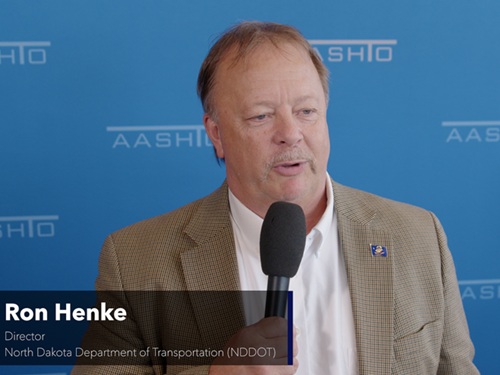The National Renewable Energy Laboratory – a division of the U.S. Department of Energy – recently introduced a new online tool to help transportation planners design more efficient and environmentally friendly mobility systems for both urban and rural areas.
[Above photo by the NREL]
The NREL’s new Mobility Energy Productivity or MEP tool distills three major components of mobility – time, cost, and energy – into a simple, easy-to-read score.
That score can quantify the efficiency of connectivity provided by one or more travel modes – such as biking, driving, or public transit – for a given geographic area, from a small neighborhood to a large state. NREL added that the MEP tool could also analyze the quality of mobility for specific groups based on traits such as income, age, and vehicle ownership.

“With MEP, we can quantify disparities in mobility and access for underserved population segments,” said Venu Garikapati, a senior transportation data researcher with NREL and one of MEP’s creators, in a statement. “We have also shown possible improvements in mobility equity based on specific scenarios, such as high levels of ride-sharing.”
He explained that the MEP algorithm quantifies the total number of destinations in an area that people can reach within a certain amount of time.
For any given square kilometer, the MEP tool calculates available opportunities across four modes – car, walk, bike, and transit – and four travel time thresholds (10, 20, 30, and 40 minutes) cross-referenced with five distinct destination types – schools, hospitals, restaurants, recreational facilities, and shopping – in addition to quantifying access to jobs.
A city’s MEP score depends on the geography, building density, road network, mode availability, travel patterns, and efficiency of the entire transportation system to connect people to their destinations.

Similar to a stock index, the score can be benchmarked for a baseline year of choice, then tracked as a percentage increase or decrease from the baseline. Locations entailing less travel time, money, and energy to reach receive heavier weighting in the tool versus locales farther away, which take more resources to reach.
MEP can also analyze the effectiveness of newer energy-efficient modes (such as electric vehicles) or cost-efficient modes (such as shared mobility services) within a given mobility system. Its flexibility, combined with the simplicity of having a single metric, makes MEP a powerful tool for government agencies, companies, and other organizations interested in improving transportation options.
NREL said several state transportation agencies – including those in Colorado, Delaware, and Florida – are evaluating the MEP tool to aid in decisions regarding infrastructure investments.
“MEP opens up a different way to think about mobility,” said Christopher Hoehne, a mobility systems researcher on the MEP team. “Seeing a mapped analysis inspires thought about community planning – where important destinations are sited. It also reveals opportunities to link different modes of travel, such as biking to public transit.”
The MEP team is also reviewing emissions data, for example, to better reflect greenhouse gases and directly account for criteria air pollutants in MEP’s calculations. In the future, the tool may also incorporate additional factors such as safety and infrastructure quality.
“We are only beginning to realize the full potential of what MEP can do and how it can be used to create healthier, more convenient mobility for everyone,” Garikapati added.
 Nation
Nation
North Dakota DOT Profiled in State DOT Update
July 3, 2025 Nation
Nation

